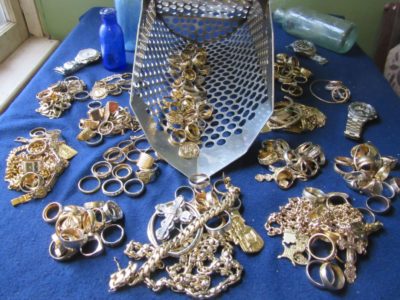“Where there’s one, there’s more.”
A top pro buddy of mine says this often. While there are certainly such things as “anomaly” finds, where you have ground that produces gold and silver consistently, there is always more to be found. These finds may be currently out of detector range. This is another important area of observation–understanding the overall strata of a site, and watching the grade of these busy areas for changes. At inland sites, changing moisture levels can also bring up new signals where there had been none before. More generally, the precise set of conditions that are needed for gold to be present at a location are not that common. Your best clue to where gold can be found is where it has been found before. This is where experience comes in. Every gold target you find has valuable information to tell. How many people had to enter the water or sunbathe at a spot for a gold item to be lost? What sand levels were needed to expose it? Was it lost at that spot or moved by the current? All of this information comes from that first find–pointing you towards the next one.
In previous books I’ve tried to encourage new hunters to examine their sites in terms of “numbers (of beach goers), dollars, and activity. These factors will often explain why some areas are good and others not. However, there aren’t always clues to follow to a logical conclusion. This is when the past results you have gotten in a given section become more important in directing your search.
From: “Water Hunting: Secrets of the Pros Volume II” 